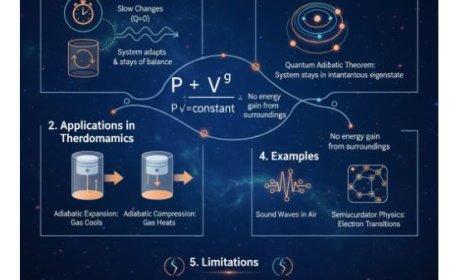Scattering Amplitude
The scattering amplitude is a key concept in quantum mechanics and particle physics, representing the probability amplitude for particles to scatter upon interaction. Though it cannot be observed directly, its magnitude determines measurable quantities like cross-sections, which describe the likelihood of scattering events. Using Feynman diagrams and perturbation theory, scientists calculate scattering amplitudes to predict the outcomes of collisions and probe fundamental forces. This concept underpins major discoveries in high-energy physics, astrophysics, and material science, making it central to understanding particle interactions and the nature of the universe.

Understanding Scattering Amplitude
A very important idea in physics, especially in quantum mechanics and particle physics, is scattering amplitude. It plays a crucial role in understanding how particles move and interact with each other.
Scattering
Before getting into scattering amplitude, it is important to understand what scattering means in a broader sense:
- Scattering is the process by which particles (such as electrons, photons, or atomic nuclei) change their direction due to interactions with other particles or fields.
- Types of Scattering:
- Elastic Scattering: The system’s total kinetic energy remains the same before and after the interaction.
- Inelastic Scattering: Some energy is transferred to the internal states of the particles, possibly leading to vibration or excitation.
Scattering Amplitude
Definition
- The scattering amplitude is a complex number that represents the probability amplitude for particles to scatter upon collision.
- Although not directly observable, the absolute value of the scattering amplitude determines the probability of a scattering event and connects to measurable quantities, such as cross-sections.
Significance of Scattering Amplitude
Understanding scattering amplitude is crucial for several reasons:
- Predicting Outcomes: It helps scientists predict what happens during particle collisions, such as those in particle accelerators.
- Quantum Field Theory: Scattering amplitudes determine transition probabilities between quantum states.
- Fundamental Forces: By studying scattering amplitudes, researchers can probe fundamental forces like electromagnetism and the strong nuclear force.
Mathematical Framework
To understand scattering amplitudes better, let’s look at their mathematical representation.
Feynman Diagram
- In quantum field theory, Feynman diagrams represent particle interactions.
- Each line and vertex in the diagram corresponds to mathematical terms that contribute to the scattering amplitude.
Figure 1: Feynman Diagram for a Simple Particle Interaction
Below is an example Feynman diagram showing two particles interacting by exchanging a virtual particle.
https://protonsforbreakfast.wordpress.com/wp-content/uploads/2014/04/feynman-diagram1.jpeg
2. Perturbation Theory
- Scattering amplitude is often calculated using perturbation theory, which approximates complex interactions by expanding them into simpler terms.
- The key idea is to start with a known solution and introduce small corrections to account for interactions.
3. Cross-Section
- The cross-section measures the probability of a scattering event occurring and is closely related to the scattering amplitude.
- The differential cross-section describes the likelihood of scattering at a specific angle, while the total cross-section gives the overall probability of scattering in all directions.
Applications of Scattering Amplitude
The implications of scattering amplitudes are vast across multiple fields:
1. High-Energy Physics
- Scattering amplitudes are crucial in studying fundamental particles and predicting new physics in colliders, such as the Large Hadron Collider (LHC) at CERN.
2. Astrophysics
- They help explain particle interactions in the early universe, including the formation of cosmic background radiation.
3. Material Science
- Scattering amplitudes play a key role in techniques like X-ray scattering, which are used to analyze the atomic structure of materials.
What's Your Reaction?



































